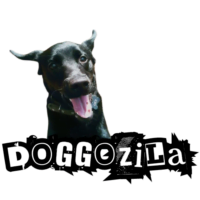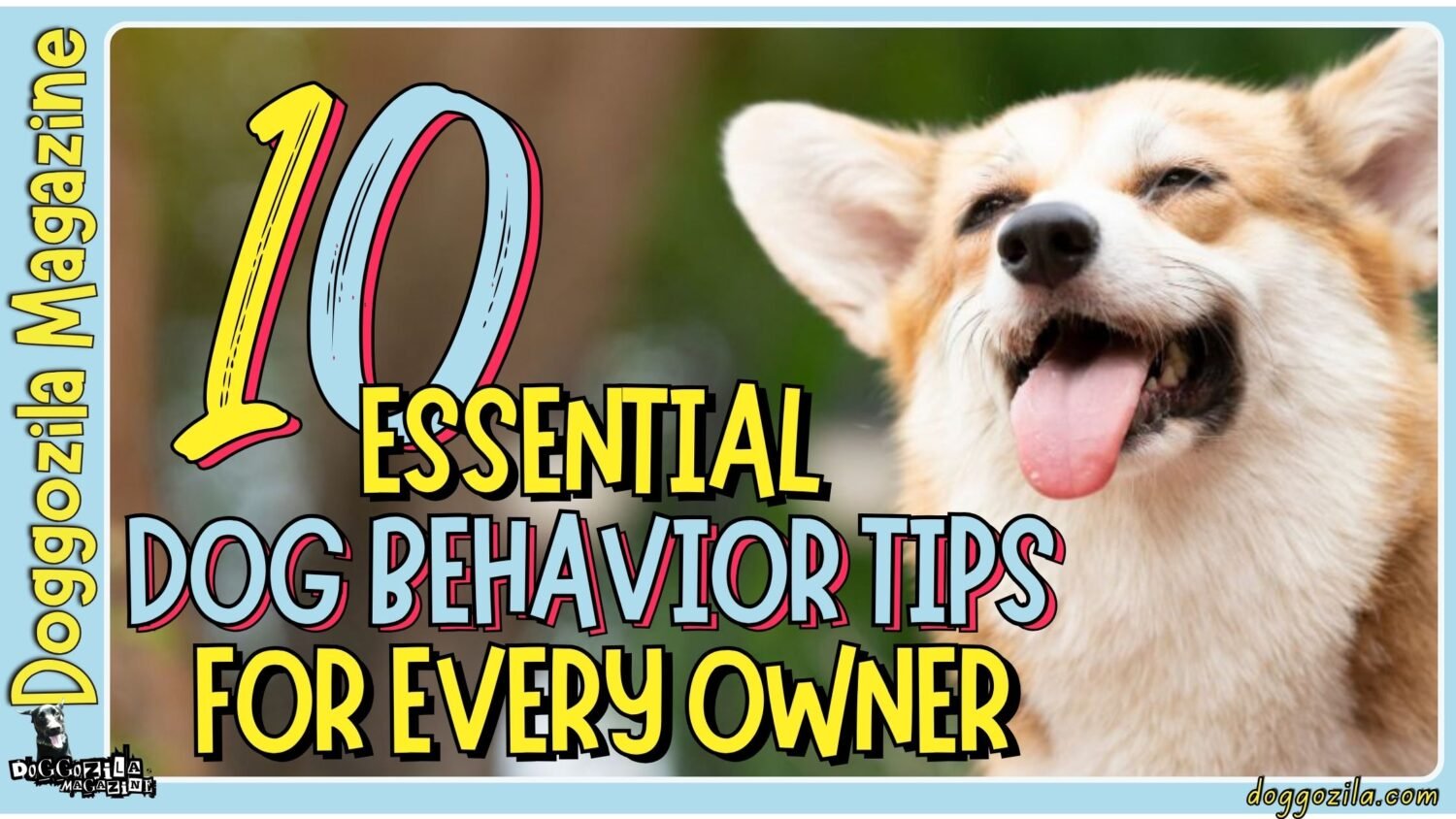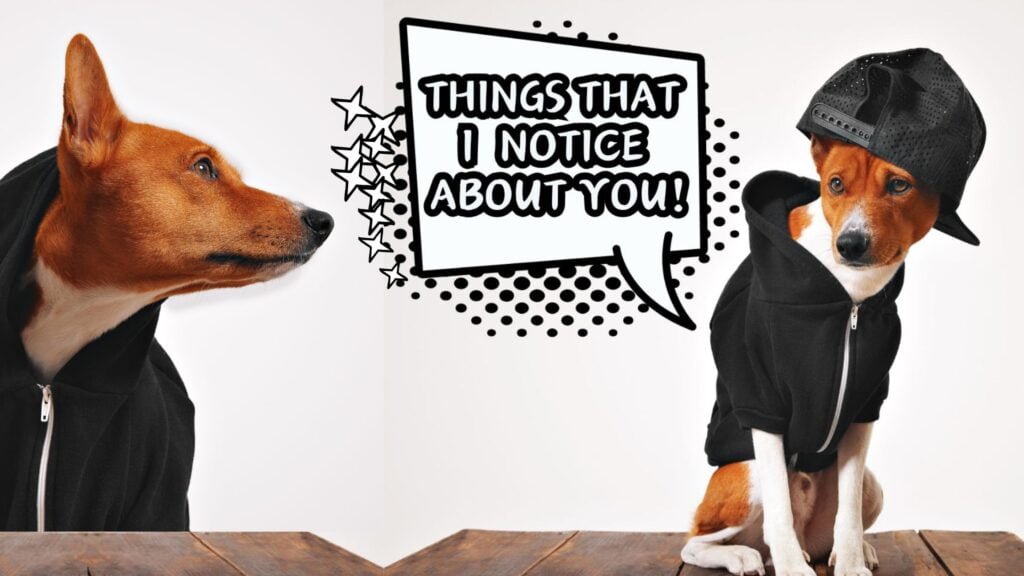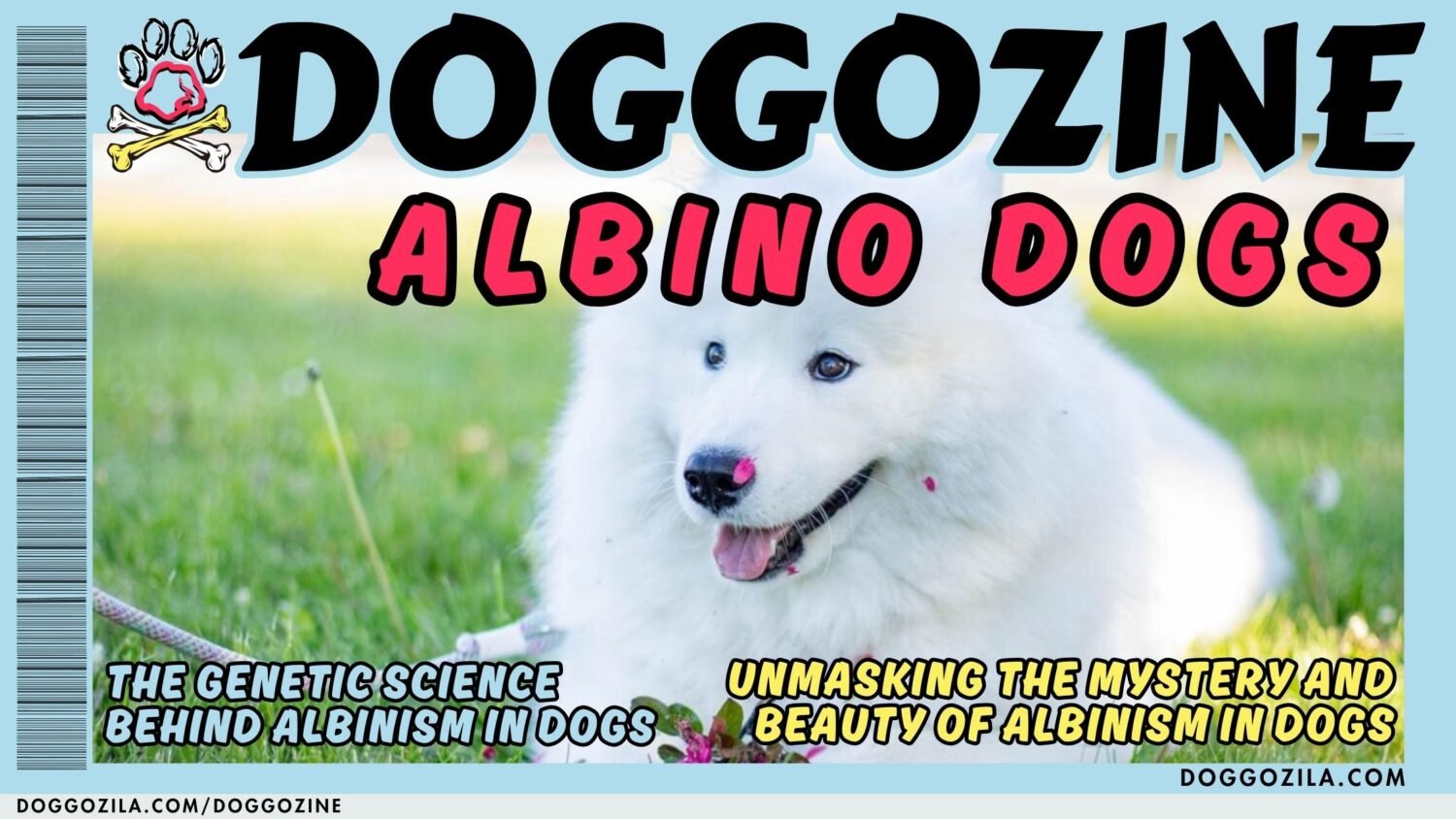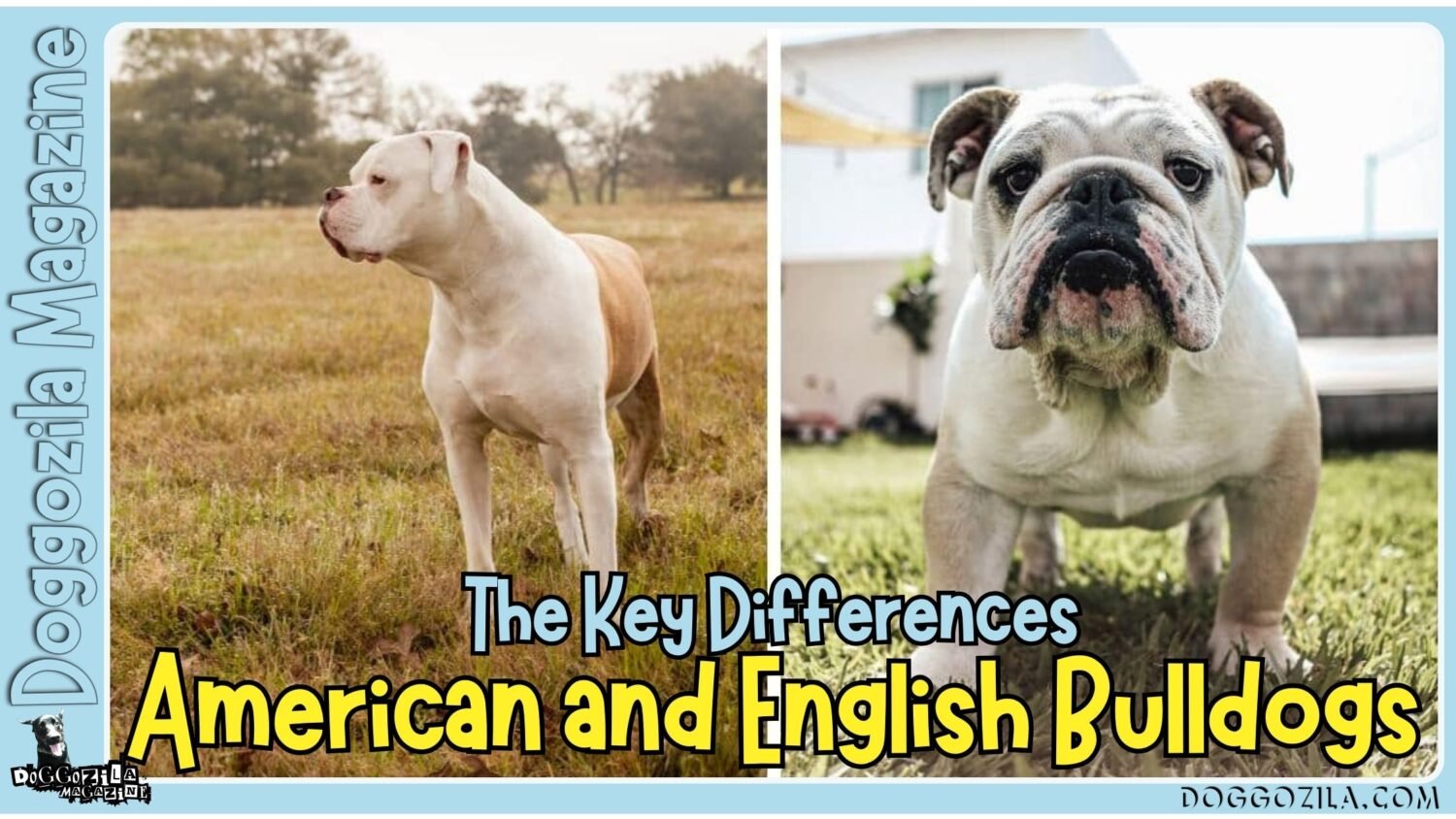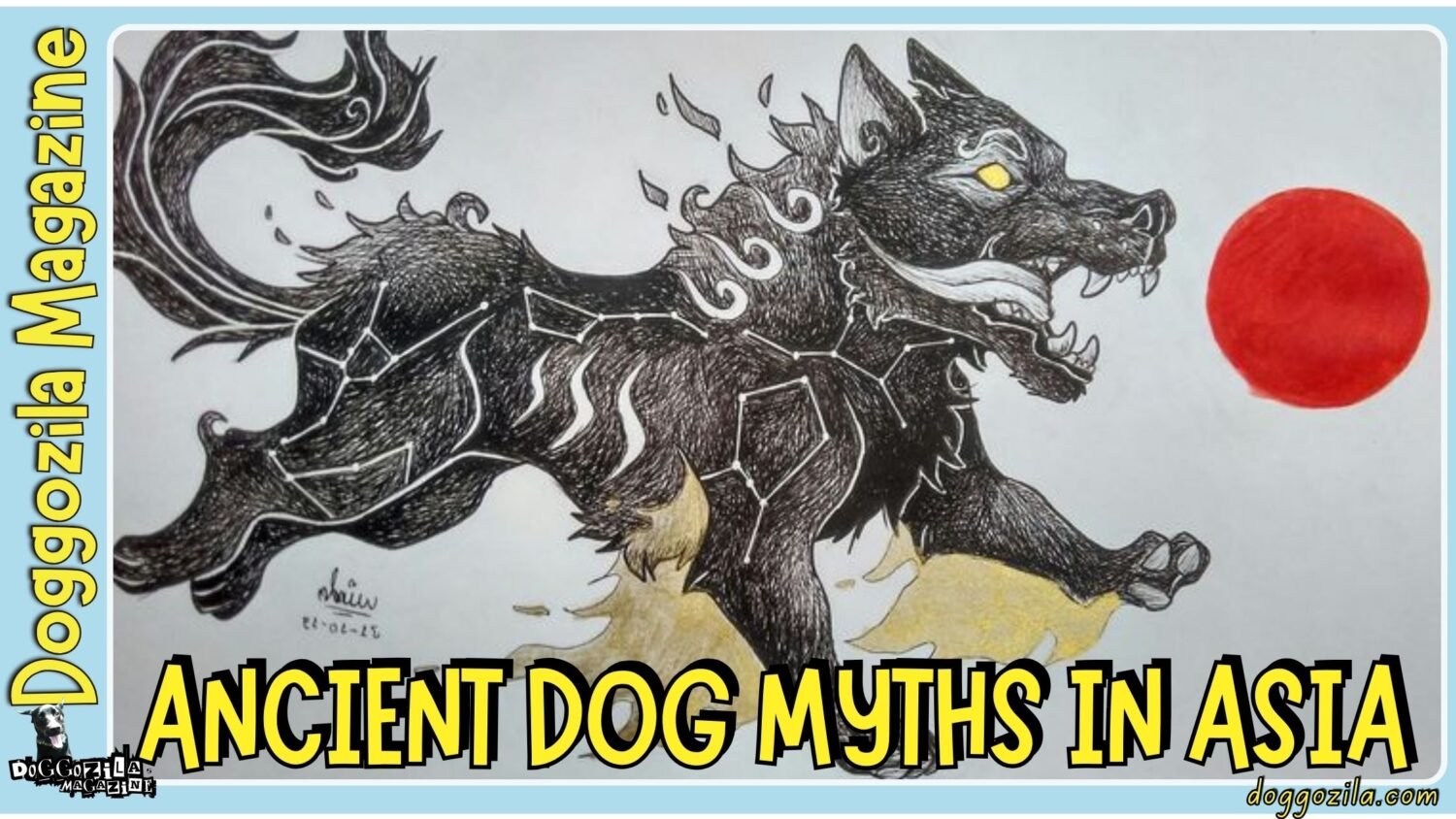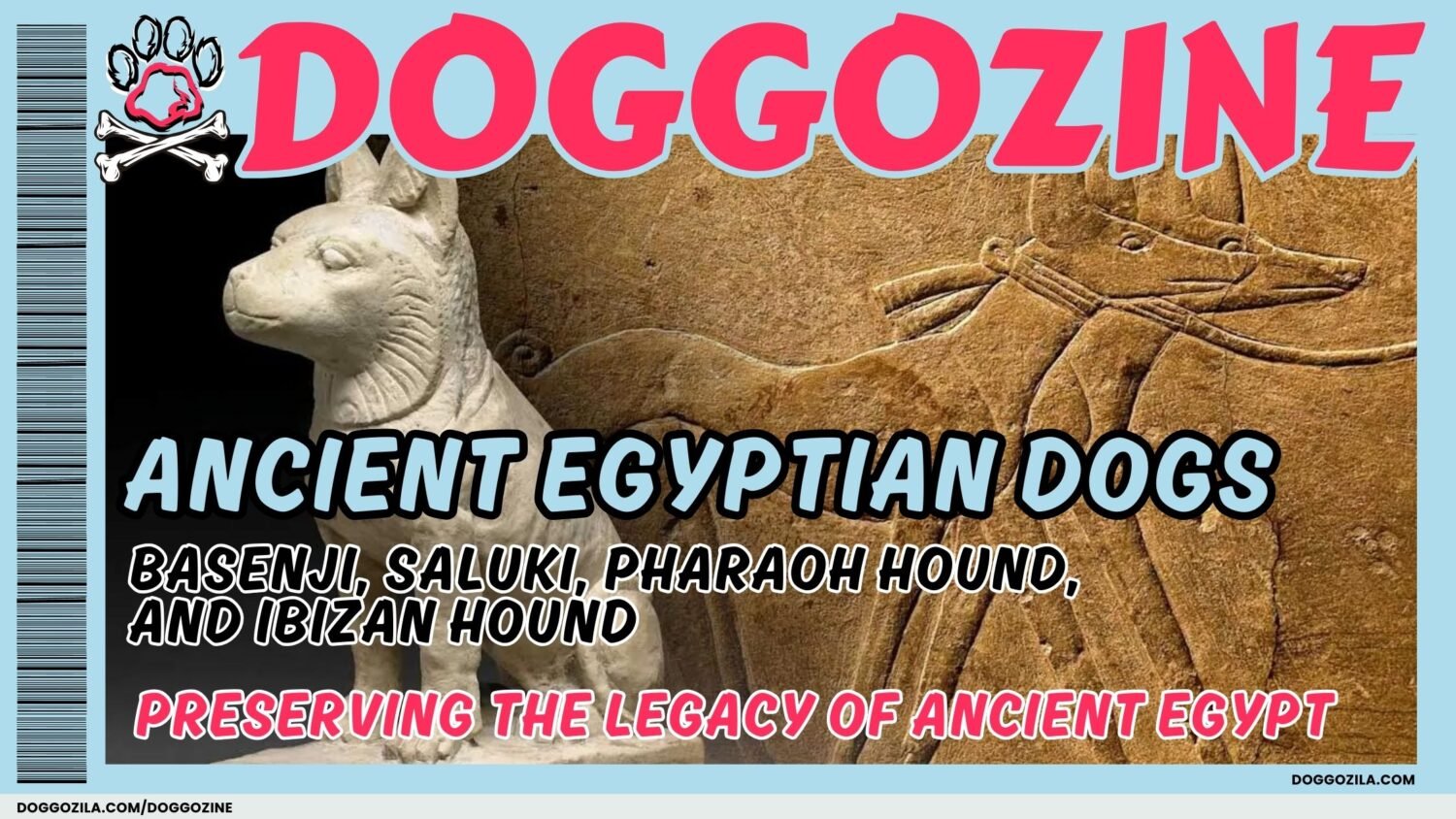Watching a dog fly through the air, laser-focused on a high-flying disc, is a sight that stops people in their parks. But this is more than just a weekend game of fetch, it’s the pulse of a vibrant, global sport. A disc dog competition brings together teams of handlers and their canine athletes in a spectacular display of agility, training, and pure joy. This sport isn’t just about who throws the farthest, it’s about the incredible communication and partnership that unfolds between a person and their dog.
For many, the journey starts with a simple frisbee and a dog who loves to chase. That simple interaction can evolve into an amazing hobby that provides physical exercise and mental stimulation for both ends of the leash. The world of competitive dog disc includes various styles, from choreographed freestyle routines to distance-catching games, ensuring there’s a place for every dog and handler. Stepping into this community opens up a new world of adventure, friendship, and shared accomplishment.
In this comprehensive guide, we’ll explore everything you need to know about this exciting sport. We’ll uncover the different types of competitions, learn how to start training, and discover how the disc dog competition scene builds more than just champions, it builds unbreakable bonds. Get ready to see that flying disc in a whole new light.
“When your dog leaps with wild abandon, twisting mid-air to snatch a soaring disc,
you’re witnessing more than a game, you’re seeing the heart of a disc dog competition.”
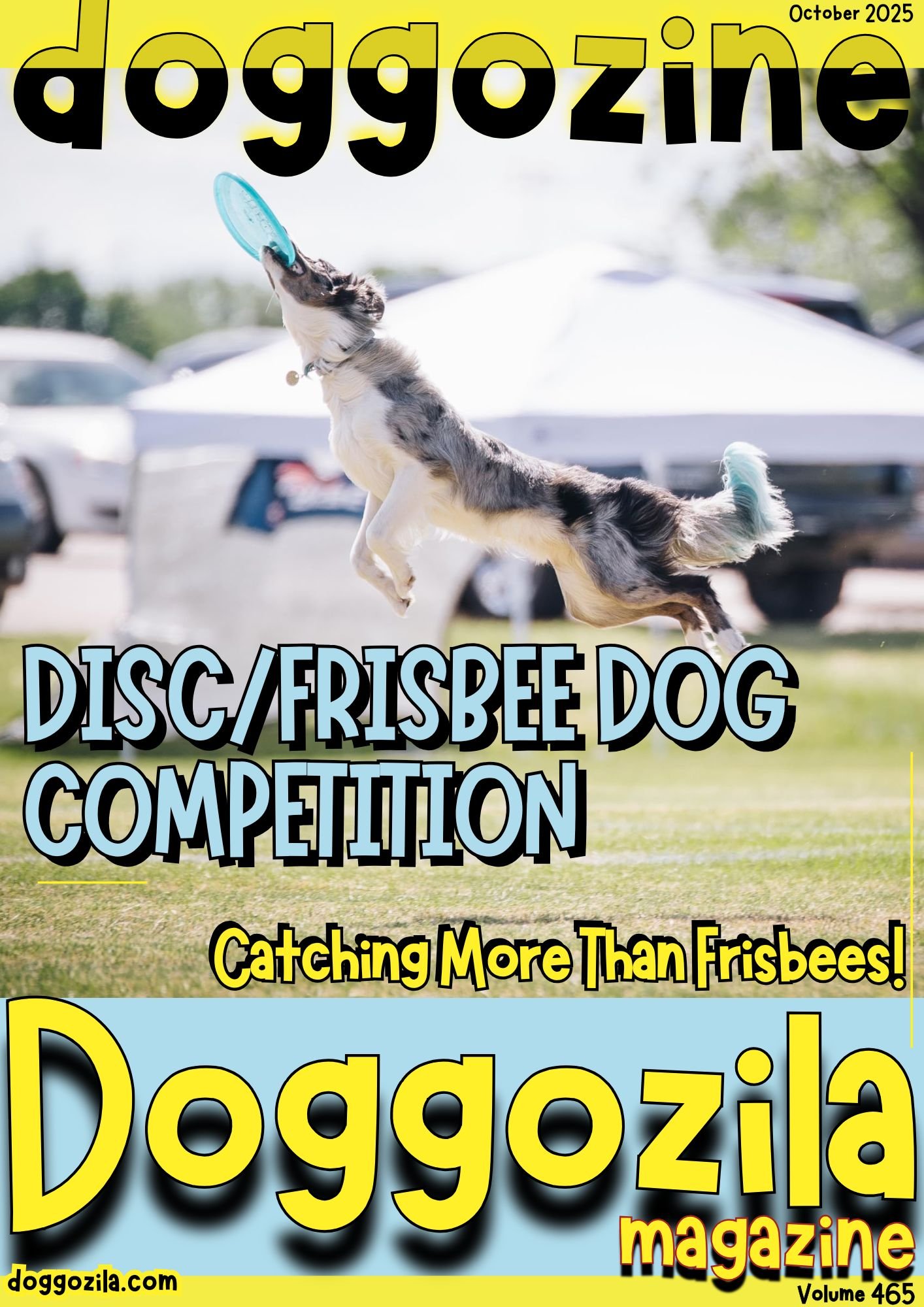
UNDERSTANDING THE FUNDAMENTALS OF A DISC DOG COMPETITION
A disc dog competition is an organized event where teams, consisting of one human thrower and one canine catcher, perform using flying discs. The sport broadly divides into two main formats, such as distance catching and freestyle routines, each testing different skills and strategies. These events are governed by organizations like the Skyhoundz World Canine Disc Championship and the UDP (Ultimate Disc Play) Frisbee Dog World Cup, which set standardized rules and ensure fair play.
The foundation of any good performance lies in the seamless partnership between the dog and handler. Success depends not on brute strength but on precise throws, intelligent positioning, and the dog’s enthusiastic drive to catch the disc. Every team, from beginners to world champions, focuses on building this connection first and foremost, making training a deeply rewarding process. The community is known for its supportive atmosphere, where seasoned competitors often cheer for and advise newcomers.
Participating in your first event can feel daunting, but most competitions welcome novices with special divisions. The focus is always on safety, fun, and celebrating the unique talents of every dog. Whether your goal is to win a world title or simply enjoy a weekend activity with your best friend, the world of canine disc has a place for you. The journey typically begins with a single, wobbly throw and a happy, chasing dog.
What Exactly Is A Disc Dog Competition And How Did It Start?
The modern disc dog competition has its roots in the 1970s, sparked by a legendary moment between a college student and his dog. In 1974, a young man named Alex Stein and his Whippet, Ashley, famously jumped the fence during a nationally televised baseball game and performed an impromptu disc routine for the crowd. This unexpected publicity captured the nation’s imagination and helped launch the sport, leading to the first organized competitions soon after.
Today’s events are sophisticated tournaments with clear rules, judging criteria, and multiple skill divisions. The two primary game types are “Toss & Fetch,” a distance and accuracy game, and “Freestyle,” a choreographed routine set to music. Each format requires a different set of skills, allowing teams to play to their strengths, whether that’s raw athleticism or artistic flair and complex trick sequences.
The sport continues to evolve, with new tricks, throwing techniques, and training methods developing every year. What started as a quirky sideshow has grown into a respected international sport that celebrates canine athleticism and the human-animal bond. The core spirit, however, remains the same, the sheer joy of playing together with a flying disc. Find out more about Frisbee dog sport on Wiki!
The Essential Gear You Need For A Disc Dog Competition
You don’t need much to start, but the right equipment makes a significant difference in safety and performance. The most critical piece is the disc itself, you should always use discs made from soft, flexible plastic designed specifically for dogs. These dog discs are gentle on mouths and teeth, unlike rigid ultimate frisbees or cheap plastic toys that can cause serious injury. Brands like Hero, Hyperflite, and Jawz are popular choices for their durability and soft bite.
Beyond discs, your gear should include a comfortable, non-restrictive harness for your dog to wear during warm-ups and a long leash for training control. For you, comfortable clothing and athletic shoes are a must, as you’ll be doing plenty of running during practice. Many competitors also bring a water bowl, a towel, and a shady crate or mat to give their dog a cool, quiet place to rest between rounds at a competition.
Investing in a few different disc models can be helpful, as some are better for distance throws while others are easier for dogs to catch mid-air. As you progress, you might explore accessories like a disc carrier bag or a portable speaker for practicing freestyle routines. Remember, the best gear supports your dog’s safety and comfort, allowing their natural talent and drive to shine through during a disc dog competition.
Why Any Breed Can Excel In A Disc Dog Competition?
One of the most beautiful aspects of this sport is its incredible inclusivity. While high-flying Border Collies and Australian Shepherds are common sights on the competition field, they don’t have a monopoly on talent. We’ve seen surprising stars of every shape and size, from lightning-fast Terriers to determined Dachshunds and powerful Pit Bulls. The key isn’t breed but drive, athleticism, and, most importantly, a desire to play with the disc.
Different dog breeds naturally excel in different aspects of the sport. Herding dogs often dominate freestyle with their intelligence and agility, while sighthounds can be incredible distance catchers due to their explosive speed. Even smaller dogs can be fantastic freestyle performers, dazzling crowds with their quick moves and tight turns close to the handler. The judging criteria in freestyle often reward creativity and teamwork over pure power, which levels the playing field.
The most important qualification is a dog that is physically sound and possesses a solid “play drive” or “prey drive” focused on the disc. A dog that loves to chase and retrieve a ball can almost always be taught to transfer that obsession to a flying disc. This makes the world of disc dog competition a wonderfully democratic space where any dog, from any background, can become a celebrated athlete based on their own unique abilities.
🔑 Key Points: A disc dog competition is an organized sport with two main formats, distance catching (Toss & Fetch) and choreographed freestyle that celebrates the partnership and communication between you and your dog.
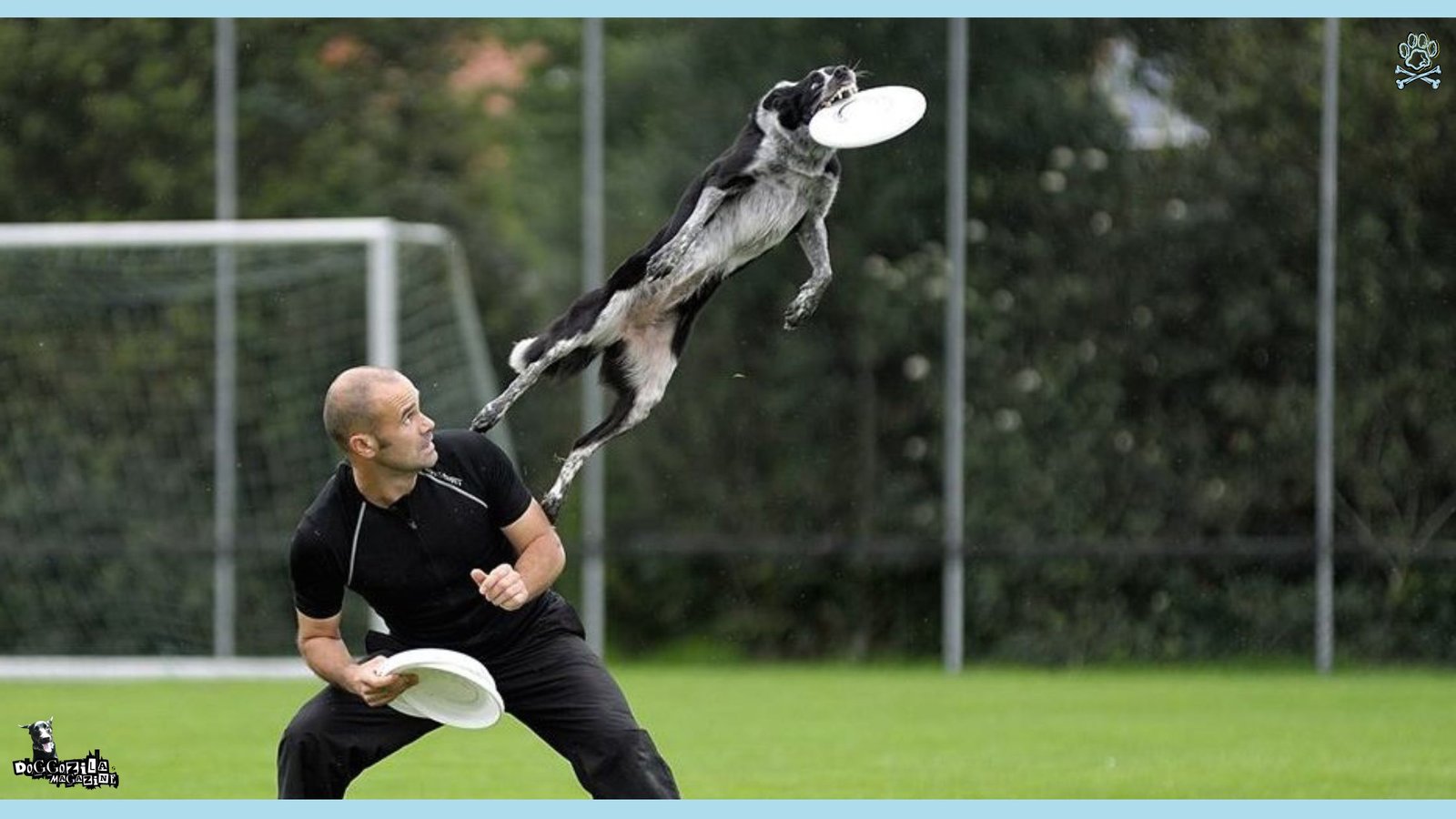
THE TRAINING JOURNEY: PREPARING FOR YOUR FIRST DISC DOG COMPETITION
The path to competition is a gradual process built on positive reinforcement, clear communication, and a lot of patience. You should never start by asking your dog to make spectacular leaps, the foundation begins on the ground with basic obedience and building a passionate love for the disc. The first step is simply creating value for the toy, making it the most exciting object in the world through playful engagement and short, fun sessions.
Once your dog is eagerly chasing the disc, you introduce the crucial concept of the “out,” where the dog brings the disc back and reliably releases it to your hand. This foundational retrieve behavior is the engine of your entire routine, as a smooth return allows for rapid-fire throws and continuous flow. From there, you can begin teaching simple jumps and catches, always prioritizing your dog’s confidence and physical safety over height or difficulty.
Training sessions should be short, positive, and always end on a high note, leaving your dog wanting more. This consistent, reward-based approach builds a dog that doesn’t just perform but genuinely loves to work. The goal of training isn’t to force behaviors but to channel your dog’s natural play drive into the skills needed for a successful disc dog competition. This journey strengthens your bond in incredible ways, creating a partnership built on mutual trust and fun.
Three Steps for Building A Rock-Solid Fetch For Disc Dog Competition Success
A reliable fetch and return is the absolute cornerstone of the sport, far more important than any fancy trick. Without it, your routine turns into a frustrating game of chase where you run after your dog instead of preparing for the next throw.
- Start by rewarding any interaction with the disc, a nose touch, a pick-up, a hold, while using high-value treats or a second, identical disc as a reward. This builds a positive association with the toy itself.
- Next, shape the retrieve by encouraging your dog to bring the disc back to you. You can do this by running backward to create momentum toward you or using two discs, throwing the second one only after they return with the first.
- The final piece is teaching a clean “out” or drop, you can trade for a tasty treat or gently hold the disc while saying “out” until they release. Consistency in this process is what creates a reliable partner.
Practice this foundation in various environments with different levels of distraction to build resilience. A dog that will eagerly fetch and return in a quiet park but not at a busy disc dog competition is not yet ready for prime time. This fundamental skill might not be as flashy as a huge leap, but the judges notice smooth transitions, and a solid fetch is what allows you to build complex sequences in freestyle routines.
Introducing Jumps And Catches Safely Into Your Routine in Three Steps
Teaching your dog to leap for a disc is an exciting milestone, but it must be approached with their long-term health in mind. You should never force a jump or ask a young dog with open growth plates to jump at full height.
- Start with “rollers,” where you roll the disc along the ground, encouraging your dog to chase and pounce on it. This builds their eye-paw coordination and confidence in catching a moving target.
- Next, progress to very low, short throws that your dog can catch without leaving the ground or with just a small hop. The goal is to build a history of successful catches, reinforcing that the disc is always catchable. Gradually, as your dog’s skill and confidence grow, you can increase the height and distance of your throws. Always watch your dog’s landing, a safe, four-point landing is the goal, not a crash landing on their spine.
- Incorporate conditioning exercises outside of disc training to strengthen your dog’s core muscles, which act as a natural brace for their joints. Practices like “sit-to-stand” repetitions, balance work on unstable surfaces, and cavaletti poles can dramatically improve their athleticism and injury resilience.
The ultimate goal of a disc dog competition career is a healthy, happy dog, so every jump should be trained with their physical well-being as the top priority.
Creating Your First Simple Freestyle Disc Dog Competition Routine
A freestyle dog routine can seem overwhelming, but it’s simply a series of connected throws and tricks set to music. Start small by choosing a song with a good beat that energizes both you and your dog. Then, map out a handful of your most reliable throws and catches, perhaps a simple vault, a leg pass, and a few basic jumps. The key is to sequence them in a way that flows naturally for your team, minimizing dead time where you are not interacting.
Focus on creating “flow,” the seamless connection between one trick and the next. This often means thinking several throws ahead and positioning your body to set up for the next move smoothly. Even simple tricks look impressive when performed with confidence, energy, and synchronization with the music. Your presence and showmanship are a huge part of the performance, so remember to smile and engage with the audience and your dog.
Practice the entire routine in short segments, always keeping it fun and rewarding for your dog partner. Video record your run-throughs to identify areas for improvement, such as awkward pauses or missed connections. Your first disc dog competition routine doesn’t need to be technically complex, but a clean, enthusiastic, and well-choreographed performance with a happy dog will always score well and win over the crowd.
🔑 Key Points: Success is built on a foundation of positive reinforcement, starting with building a passionate obsession for the disc and a reliable fetch before ever attempting complex jumps or tricks.
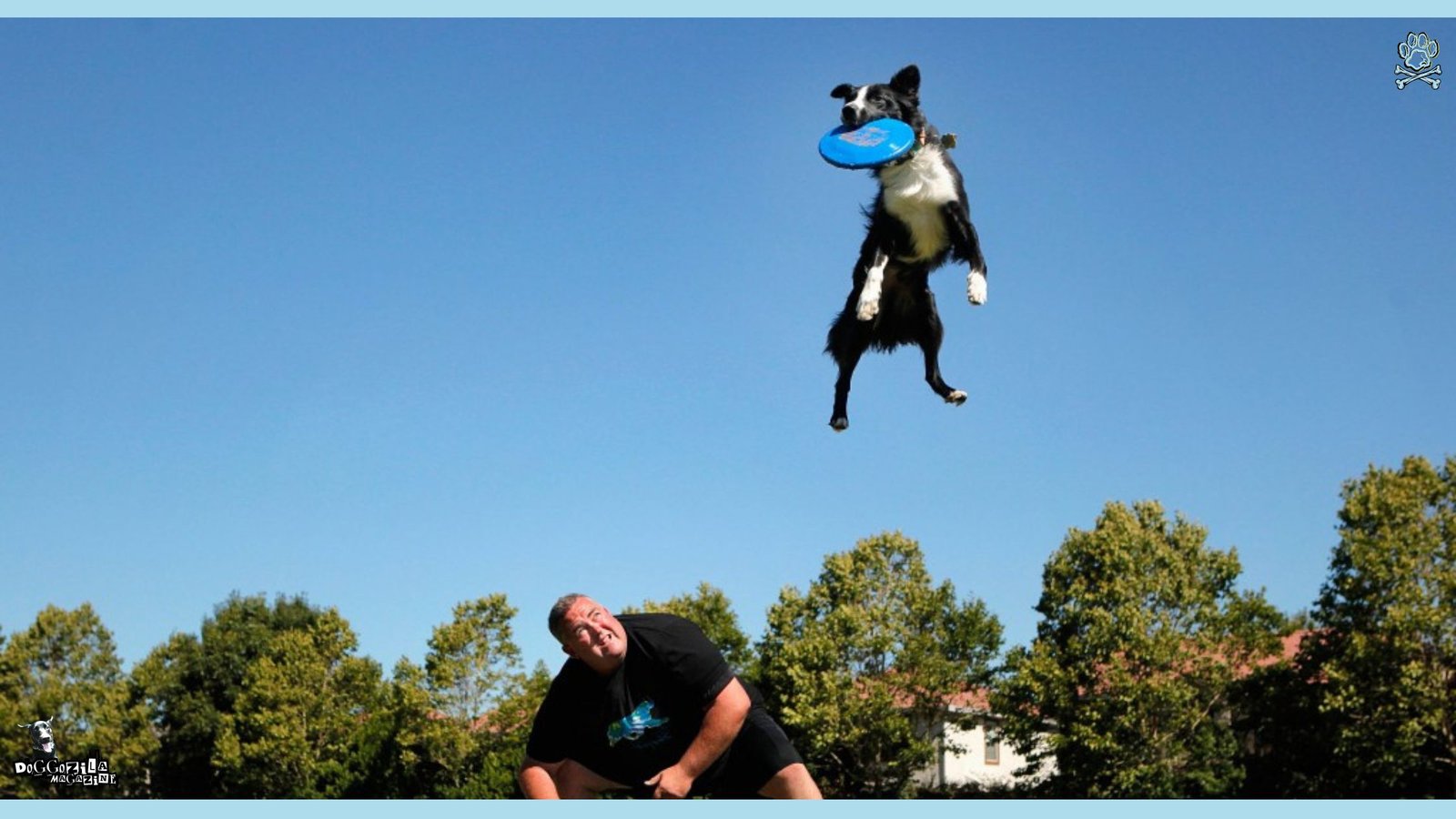
MORE THAN A GAME: THE INCREDIBLE BOND FORGED IN DISC DOG COMPETITION
When you commit to training for a disc dog competition, you’re signing up for much more than a hobby. You are entering a dedicated partnership that requires absolute trust, non-verbal communication, and shared purpose. The hours spent in the park, working through challenges and celebrating small victories, weave a connection that transcends the competition field. This relationship becomes the true trophy, regardless of the ribbons you win.
Handlers learn to read their dog’s subtle body language, the slight shift in weight before a leap, the intensity in their gaze tracking the disc, the flick of an ear signaling readiness. In turn, dogs learn to anticipate their handler’s movements and throws, creating a dance that appears telepathic to outsiders. This deep understanding builds a confidence in your dog that permeates all aspects of life, making them more resilient and focused in unfamiliar situations.
The trust required for a dog to launch itself into the air, completely focused on a disc with faith that you have calculated the throw correctly, is profound. This mutual reliance is the heart of the sport. The bond forged through this process is one of the most rewarding experiences a dog owner can have, creating memories and a level of companionship that lasts a lifetime. You’re not just a team, you’re best friends working in perfect harmony.
How Communication Evolves Through Disc Dog Competition Training?
The communication developed in this sport is a sophisticated language of movement, timing, and energy. It begins with basic verbal cues like “get it” and “out,” but quickly evolves into a complex system of physical signals. A handler might use a specific body lean, a hand signal, or the direction of their run to cue the next trick without a single word. The dog becomes incredibly adept at reading this intentional movement, often performing entire routines in near silence.
This refined communication happens through consistent feedback loops during training. When a throw is poorly timed, the dog misses. When the handler misreads the dog’s energy level, the sequence falls apart. Each successful catch and each missed opportunity provides immediate feedback, forcing both partners to adjust and understand each other better. This process sharpens your observational skills, making you more attuned to your dog’s physical and mental state.
This enhanced dialogue doesn’t turn off when you leave the field. You’ll find yourself more connected during walks, at home, and in any training scenario. The skills you develop like patience, clear signaling, and reading the dog body language, make you a better handler and guardian overall. The ultimate goal of any disc dog competition team is this seamless, silent conversation that makes the complex look effortless and turns work into pure play.
The Surprising Confidence Boost For Shy Dogs
Disc dog training can be a transformative experience for shy or hesitant dogs. The structured, predictable pattern of chase-and-reward provides a clear framework that anxious dogs find comforting. As they experience repeated success in catching the disc, their confidence begins to blossom. This newfound self-assurance, earned through their own accomplishments, often generalizes to other environments, making them braver and more resilient.
The disc itself can become a “security blanket” for a nervous dog, providing a familiar and highly rewarding focus point in otherwise stimulating environments like a disc dog competition. Instead of worrying about the strange dogs, people, and noises, they can lock onto their favorite toy and the job they know how to do. This focused engagement is a powerful tool for managing anxiety and building positive associations with new places.
We’ve witnessed incredible transformations where once-timid dogs, given the space and patience to learn at their own pace, become radiant, confident athletes in the ring. The sport gives them a voice and a purpose, allowing their true personality to emerge from behind a veil of fear. This psychological benefit is, for many owners, even more valuable than any competitive title they might earn along the way.
Stories Of Rescue Dogs Who Found Purpose In The Sport
The disc dog community is filled with inspiring stories of rescue dogs who discovered their calling through the sport. Many of these dogs, often high-energy herding or sporting mixes, ended up in shelters precisely because their intelligence and drive were misunderstood. They needed a job, and a flying disc provided the perfect outlet for their boundless energy and need for mental stimulation.
One remarkable case is that of a mixed-breed dog named Rocket, who was repeatedly returned to a shelter for being “too hyper.” His final adopter introduced him to a disc, and within a year, they were competing nationally. The sport gave Rocket the focus and direction he needed, channeling his energy into breathtaking athletic performances and turning his “problem” behavior into his greatest asset.
These success stories highlight a powerful truth, many dogs just need an outlet for their natural talents. A disc dog competition provides structure, challenge, and immense satisfaction for these canine athletes. Adopting a rescue and introducing them to this sport can be a profoundly rewarding journey, offering the dog not just a home, but a passion and an identity as a valued teammate and champion.
🔑 Key Points: The intense training and non-verbal communication required for competition forge a profound bond of trust and understanding that strengthens your overall relationship with your dog.
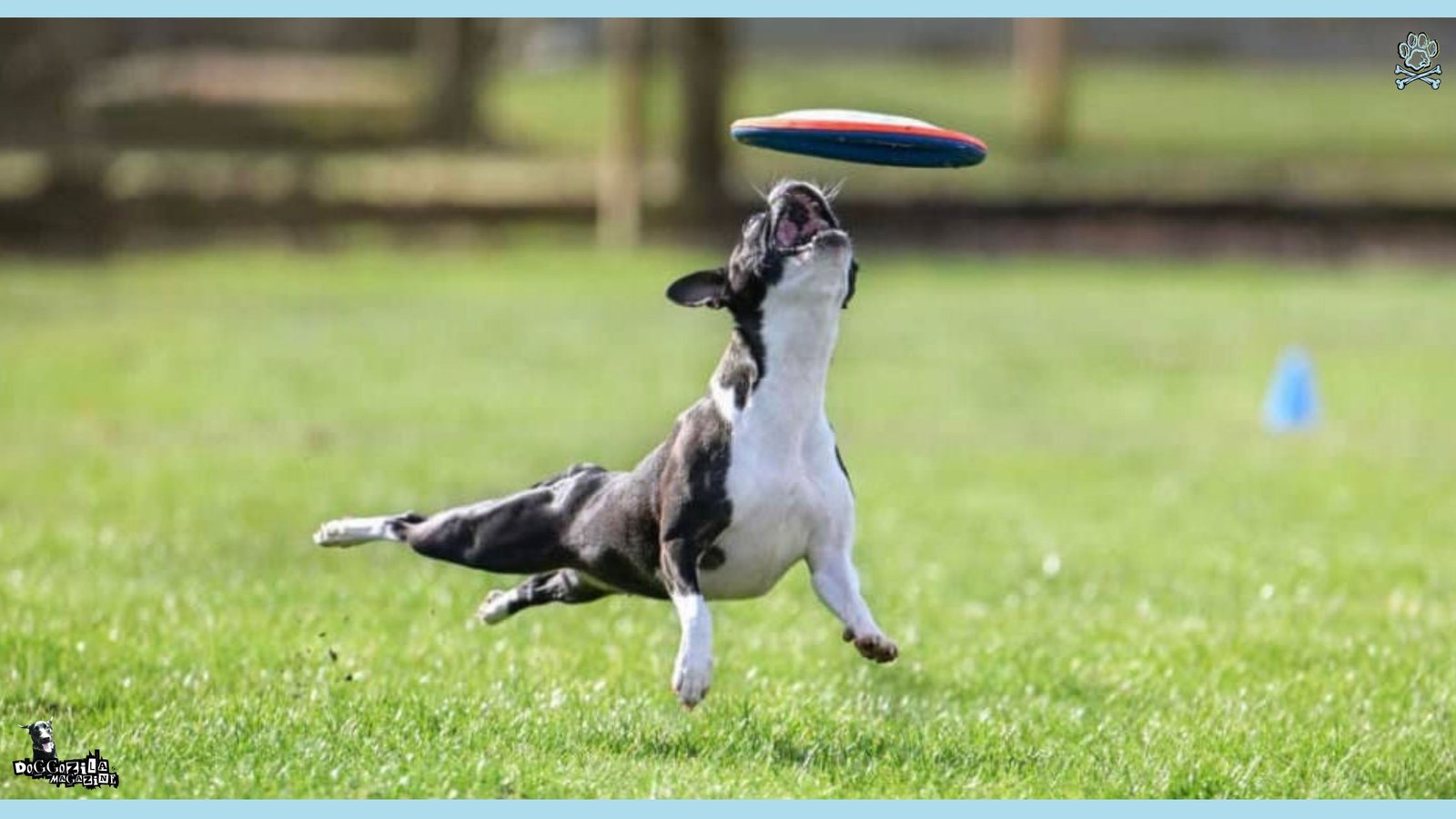
THE TWO MAIN STAGES: NAVIGATING DIFFERENT DISC DOG COMPETITION FORMATS
Understanding the two primary formats is crucial for any team entering the sport. Most competitions feature both “Toss & Fetch” and “Freestyle” events, allowing teams to showcase different strengths. Toss & Fetch is often considered the gateway event, as its rules are straightforward and it requires less complex training to enter. Freestyle, on the other hand, is the artistic expression of the sport, where creativity and choreography take center stage.
Some teams specialize in one format, becoming distance powerhouses or freestyle dog artists, while others compete in both, enjoying the different challenges each presents. The scoring systems are distinct, with Toss & Fetch being more quantitative and Freestyle relying on subjective judging based on technical merit and artistic impression. Knowing the rules and point structures for each game is a key part of your strategic preparation for a disc dog competition.
Many local leagues and larger tournaments will run both formats simultaneously, giving you a full weekend of play. This variety is part of what keeps the sport fresh and engaging for years. As you train, you’ll naturally discover which format you and your dog enjoy most, whether it’s the fast-paced thrill of the distance field or the creative partnership of the freestyle circle.
Mastering Toss & Fetch: The Distance Disc Dog Competition
Toss & Fetch, also known as distance/accuracy, is a game of speed, precision, and strategy. The playing field is a large grid, typically 50 yards long, divided into scoring zones. Teams have 60 seconds to complete as many throws and catches as possible, with points awarded based on where the dog catches the disc. Catches made in the farthest zones score the most points, with bonuses awarded for dogs who catch with all four paws off the ground in the air.
The handler must stand behind a throwing line, and the dog is released from a starting line. The clock starts on the first throw, and the team works to maximize their score within the time limit. Strategy comes into play in deciding whether to aim for high-value long throws, which risk misses, or to go for more reliable shorter catches to build a steady score. The fast pace makes it incredibly exciting for participants and spectators alike.
This format is excellent for building a dog’s drive, speed, and catching reliability under pressure. It teaches a handler to make quick, accurate throws and to read their dog’s positioning on the field. Success in Toss & Fetch requires a powerful, fast dog and a handler with a strong, consistent arm. For many, the sheer athleticism of this disc dog competition format is the biggest draw.
The Art Of Freestyle: Choreography In Disc Dog Competition
Freestyle is the ballet of canine disc, a choreographed performance set to music that showcases the team’s creativity, athleticism, and connection. Routines typically last between one and three minutes and are performed within a large, marked area. Judges score based on several categories, including Canine Athleticism, Degree of Difficulty, Execution, and Showmanship. The result is a spectacular blend of sport and art.
In freestyle, teams perform a series of tricks, which can include multiple vaults (where the dog launches off the handler’s body), complex mid-air catches, and creative moves like behind-the-back passes or blind catches. The flow and variety of the moves are critical, as are the originality of the routine and the obvious enthusiasm of the dog. The synchronization between the team’s movements and the music’s rhythm and themes is also heavily weighted.
Creating a winning freestyle routine is a long-term project that involves selecting the perfect music, designing unique tricks, and countless hours of polishing. The best routines tell a story and create an emotional connection with the audience. This format truly celebrates the unique partnership of each team and is the ultimate expression of what makes a disc dog competition so captivating to watch and so rewarding to perform.
How To Choose The Right Format For Your Team’s Debut?
Choosing your first disc dog competition format depends on your and your dog’s strengths and personality. If your dog is incredibly fast and has a reliable retrieve, and you have a strong, accurate throw, Toss & Fetch might be your perfect starting point. It’s less complex to prepare for initially and offers immediate, objective feedback on your performance through your score.
If you and your dog enjoy creative play, have a knack for learning complex physical tricks, and you’re drawn to music and performance, then Freestyle may be your calling. This format is ideal for handlers who enjoy the creative process of routine building and for dogs that are agile and enjoy working in close proximity to their person. It requires more upfront training but can be deeply satisfying.
Many experts recommend trying both at a local, low-pressure event to see which one feels more natural. You might be surprised! Some dogs that seem built for distance light up with the mental challenge of freestyle, and vice versa. The most important thing is to choose the path that seems the most fun for your team, as that enthusiasm will fuel your training and lead to the best experience in your first disc dog competition.
Disc Dog Competition Formats At A Glance
| Format | Focus | Duration | Ideal For |
| Toss & Fetch | Distance, Speed, Accuracy | 60 seconds | Fast dogs, strong throwers, teams who love a fast-paced game. |
| Freestyle | Choreography, Creativity, Teamwork | 1-3 minutes | Creative handlers, agile dogs, teams that enjoy performance and complex tricks. |
🔑 Key Points: Competitions typically feature two distinct formats, such as Toss & Fetch, which tests distance and accuracy, and Freestyle, which emphasizes choreography, creativity, and artistic expression set to music.
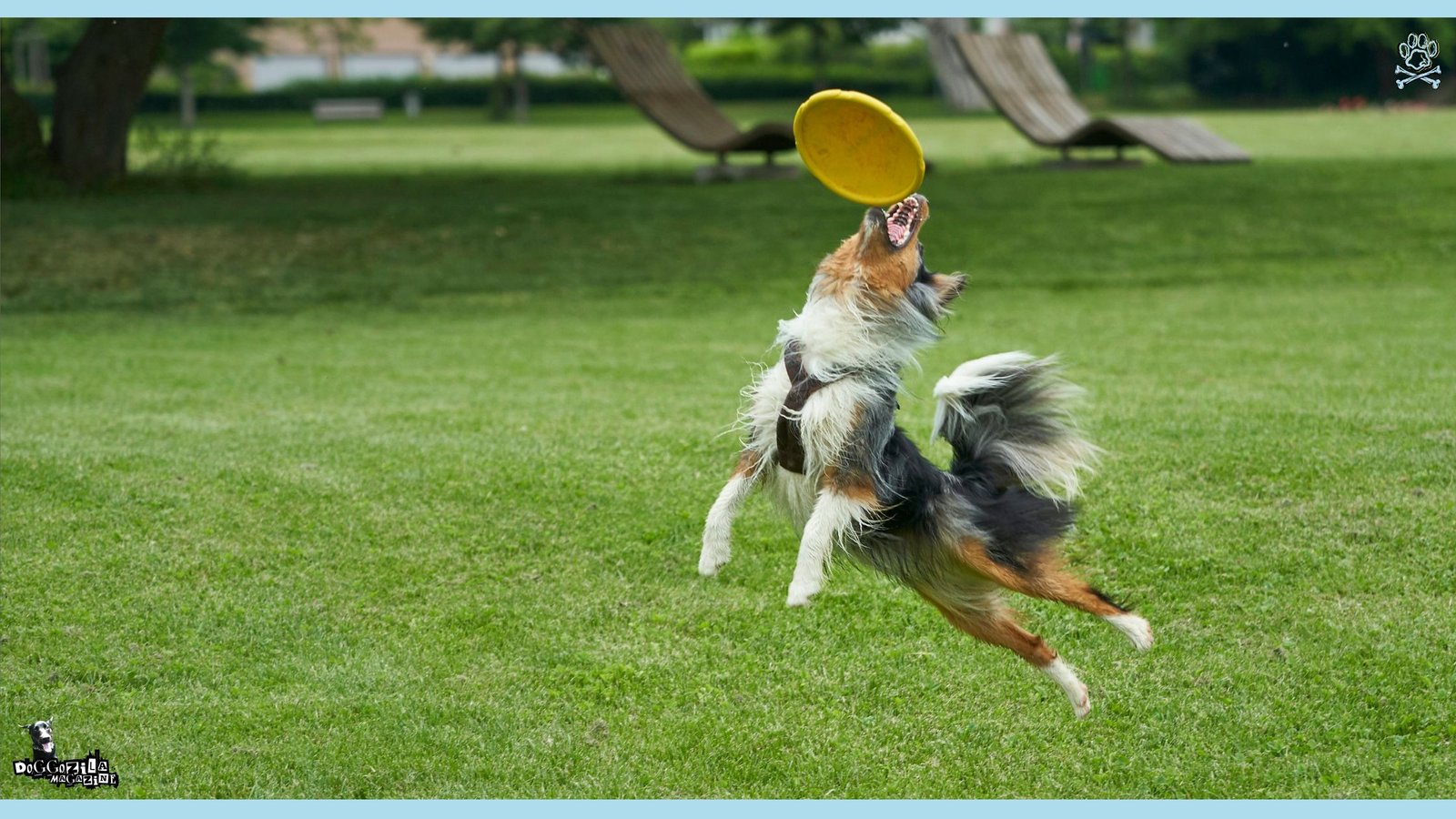
BEHIND THE SCENES: WHAT JUDGES LOOK FOR IN A DISC DOG COMPETITION?
To the untrained eye, a disc dog routine is a blur of motion and excitement, but judges are trained to analyze specific technical and artistic elements. Their scoring breaks down the performance into measurable components, ensuring fairness and objectivity in what can appear to be a subjective sport. Understanding these criteria is like having a roadmap to success, allowing you to focus your training on what truly matters for improving your scores.
In Freestyle, judges typically score on a point system across several categories, such as Canine Athleticism, Degree of Difficulty, Execution, and Showmanship. Each category contributes to the final score, with different organizations weighting them slightly differently. In Toss & Fetch, the scoring is more straightforward, based on the point value of the zones where catches are made, but judges still watch for rules compliance and fair play.
Judges are almost always experienced competitors themselves, who understand the sport from the inside out. They appreciate the hard work that goes into every routine and are looking to reward clean execution, happy dogs, and creative teamwork. They notice the small details like a smooth transition, a well-timed throw, a dog’s obvious joy that separate a good routine from a great one. Knowing their perspective can demystify the judging process for newcomers.
Decoding The Scoresheet In A Freestyle Disc Dog Competition
A freestyle scoresheet can seem complex, but its components directly reflect the core values of the sport. The “Canine Athleticism” category evaluates the dog’s performance, their leaps, speed, agility, and endurance. A dog that shows powerful, varied jumps and maintains high energy throughout the routine will score highly here. This category celebrates the raw talent and conditioning of the dog athlete.
The “Degree of Difficulty” category assesses the complexity and risk of the tricks attempted. This includes the height of the vaults, the number of mid-air catches, the complexity of the throws, and the originality of the sequences. However, difficulty is worthless without control, which is where “Execution” comes in. Execution judges the team’s precision, timing, flow, and the rate of successful catches versus misses or drops.
Finally, “Showmanship” evaluates the presentation. This includes the choreography’s creativity, the team’s use of the entire field, their synchronization with the music, and their overall stage presence and energy. A team that performs with obvious joy, engages the crowd, and has a routine that feels like a complete performance rather than a random series of tricks will excel in this category. A perfect disc dog competition routine scores high in all four areas.
The Non-Negotiable: Sportsmanship And Dog Welfare
Beyond the technical scores, there is an unwritten but paramount rule that all judges enforce, the welfare and happiness of the dog is non-negotiable. Judges have the authority to deduct points or even disqualify a team if they see any sign of handler frustration, harsh treatment, or a dog that appears stressed, fearful, or compulsive. A happy, willing dog is the absolute foundation of the sport.
Judges are watching the dog’s body language from the moment they enter the field until they leave. They look for a loose, wagging tail, a relaxed, open mouth (“play face“), and eager engagement with the handler. Signs of stress, such as a tucked tail, pinned ears, whale eye, or avoidance behaviors, are major red flags. The best handlers are those who can keep the game fun, even under the pressure of a disc dog competition.
This emphasis on welfare creates a positive culture that prioritizes the partnership. Handlers who celebrate their dog’s effort, regardless of a missed catch, and who maintain a positive, encouraging attitude are respected throughout the community. This core value ensures that the sport remains a healthy and joyful activity for the dogs at the heart of it, preserving the spirit of play above all else.
Common Point Deductions To Avoid In Your First Disc Dog Competition
Knowing common mistakes can help you avoid costly point deductions in your debut. In Toss & Fetch, the most frequent errors are stepping over the throwing line during a throw and having the dog cross the start line before being released. These are foot fault violations that nullify the points for that throw. Another common issue is failing to complete a catch, where the dog drops the disc before it is considered a possession.
In Freestyle, deductions are often related to flow and execution. Multiple missed catches (drops) will severely impact your Execution score. Routines that have long pauses where the team is not actively interacting with the disc will lose points in Showmanship and flow. Using more than one disc in a freestyle routine (unless specified in the rules) is typically not allowed and will result in a penalty.
Perhaps the most easily avoided mistake is exceeding the time limit. Know your routine’s length and practice it with a timer. Finally, a lack of variety like repeating the same two or three tricks throughout the routine will limit your scores in Degree of Difficulty and Showmanship. A polished, well-rehearsed performance that avoids these pitfalls will make a strong, positive impression at your first disc dog competition.
🔑 Key Points: Judges score performances based on specific technical (athleticism, difficulty, execution) and artistic (showmanship) criteria, while always prioritizing the visible happiness and welfare of the dog.
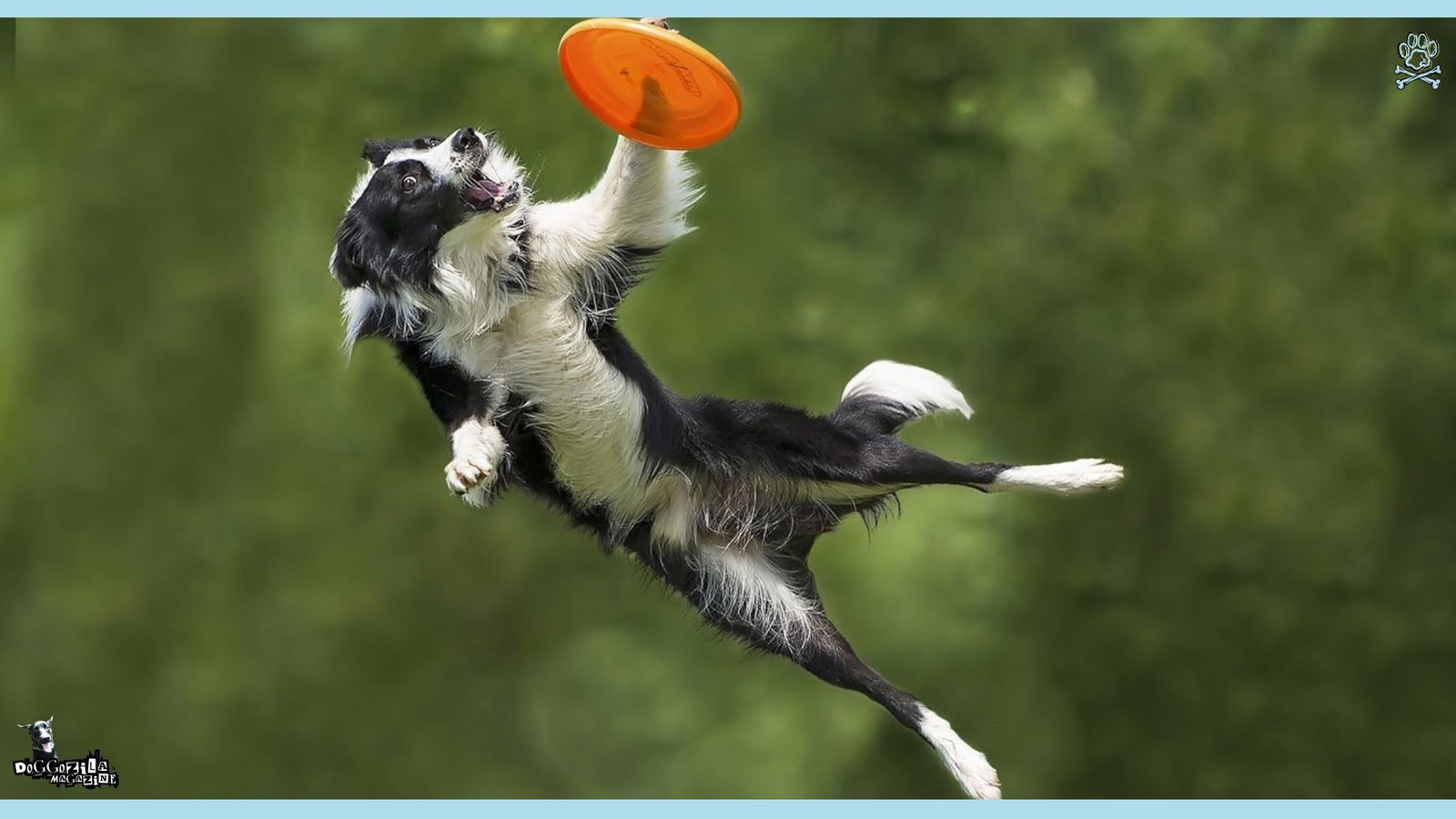
THE ROLE OF BREEDS IN DISC DOG COMPETITION PERFORMANCE
Not all breeds excel equally in the disc dog competition. Some dogs are natural athletes, while others need more training. However, any breed can enjoy the sport with the right approach. The key is matching training to the dog’s abilities. Breed diversity makes competitions exciting and unpredictable. Every dog brings something unique to the field. The sport celebrates individuality as much as skill.
Border Collies dominate the disc dog competition events due to their agility and focus. Australian Shepherds are also strong competitors. Whippets impress with their speed and grace. Mixed breeds often surprise with unique talents. Smaller breeds like Jack Russell Terriers bring energy and determination. Each breed adds diversity to the sport.
The variety makes competitions exciting and unpredictable. Breeds with strong prey drive often excel. Dogs with endurance thrive in long routines. The mix of breeds keeps audiences entertained. Every dog has a chance to shine.
Dog Training Methods Depending on the Breed
Training methods vary depending on the breed in disc dog competition. High-energy breeds need structured routines to channel their drive. Larger breeds require careful conditioning to protect joints. Smaller breeds benefit from low throws and shorter distances. Handlers must adapt to their dog’s strengths and weaknesses.
Patience and creativity are essential. With the right approach, any breed can shine. Training becomes a journey of discovery for both dog and handler. Some breeds respond better to food rewards, others to toys. Adjusting methods ensures progress. Every breed teaches handlers something new. The diversity enriches the sport.
Case studies of breeds in Disc Dog Competition
Case studies highlight the diversity in disc dog competition. One Labrador Retriever became a crowd favorite with his powerful leaps. A rescue dog with no pedigree stunned judges with flawless catches. A senior dog continued competing with modified routines. These stories prove that passion matters more than pedigree.
Every dog has the potential to succeed. The sport celebrates individuality and resilience. Case studies inspire new handlers to try. They show that every dog can find joy in the game. Stories of success motivate families to join. The sport thrives on these inspiring examples.
The Future Of Dog Sports and Technology
Disc dog competitions continues to evolve with new trends. Technology, training methods, and community growth shape its future. The sport inspires innovation while staying true to its roots. The future looks bright for dogs and handlers alike. More families are discovering the joy of the sport. Media coverage is expanding its reach.
The next generation of dog athletes is already rising. Technology is transforming disc dog competitions. Apps track performance and progress. Slow-motion videos help handlers refine throws. GPS collars for dogs monitor stamina and movement. Online platforms connect trainers and handlers worldwide.
Virtual competitions allow participation from anywhere. Technology enhances training while keeping the sport accessible. It opens new possibilities for growth. Data-driven insights improve safety and performance. Handlers can analyze routines with precision. Technology ensures the sport continues to evolve.
🔑 Key Points: For your debut event, set realistic goals centered on having fun and completing your routine, and focus on being prepared logistically to ensure a positive experience for both you and your dog.
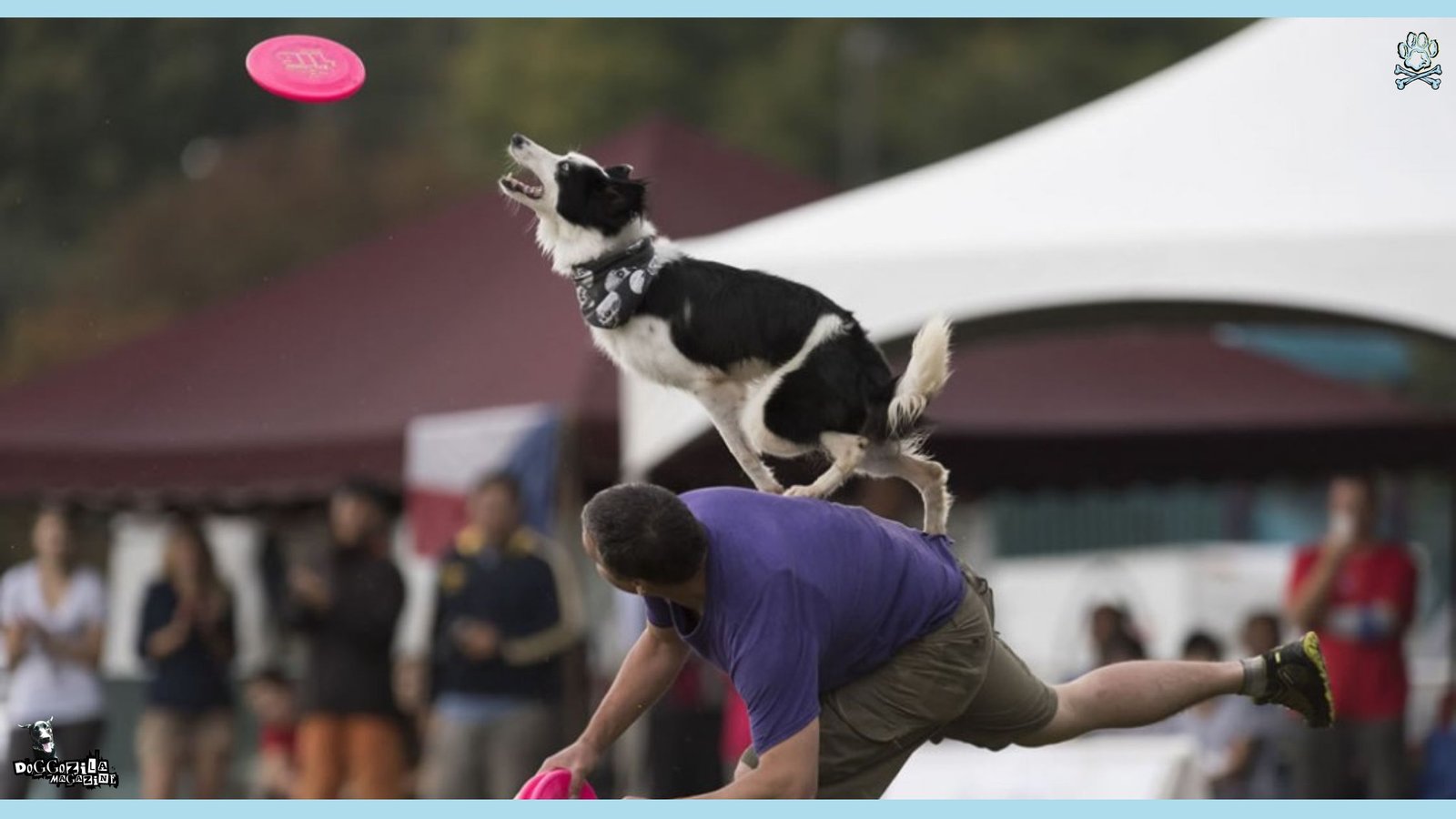
JOINING THE PACK: THE VIBRANT COMMUNITY OF DISC DOG COMPETITION
One of the most rewarding aspects of this sport is the people you meet. The disc dog competition community is famously welcoming, supportive, and inclusive. At any given event, you’ll find world champions offering advice to beginners, competitors lending discs to newcomers, and everyone cheering for every dog on the field. This culture of encouragement makes it easy to feel like you belong, even at your very first event.
Local clubs and leagues are the lifeblood of the sport, providing regular opportunities to practice and compete in a low-pressure environment. These groups often host “fun matches” that mirror the rules of formal competitions but focus on learning and experience rather than winning. Joining a club is the fastest way to improve, as you’ll get immediate feedback, dog training tips, and find potential practice partners.
The community extends beyond the field to active online forums and social media groups where members share training videos, ask for advice, and celebrate each other’s successes. This network provides a sense of camaraderie and shared purpose that enriches the entire experience. Whether online or in person, you’ll find that the people are just as great as the dogs, making the sport a truly special world to be a part of.
Finding Local Clubs And Events For Your First Disc Dog Competition
Getting started is easier than you might think. A simple online search for “disc dog club near me” or “canine disc [write your city/state]” is a great first step. Websites for major organizations like Skyhoundz, the UFO (U-FLI), and the UKC often have event calendars and club directories. Social media platforms, particularly Facebook, host numerous regional groups where members post about upcoming local events and practice sessions.
Don’t be shy about reaching out to these groups directly. Introduce yourself and express your interest in learning. You will almost always receive a warm welcome and detailed information about the next beginner-friendly event. Many clubs have loaner discs available for newcomers to try, and someone is usually happy to spend a few minutes after an event giving you some basic throwing tips.
Attending an event as a spectator first is a fantastic, no-pressure way to dip your toes in. You can see the flow of the competition, ask questions, and get a feel for the community. Watching different teams will also give you ideas for your own training and help you understand the rules in a practical context before you ever step into the ring for your first disc dog competition.
The Culture Of Learning And Sharing In The Sport
There are no secrets in the disc dog world. The most successful competitors are almost always the most generous with their knowledge. It’s common to see top handlers filming other competitors’ routines, not to steal ideas, but to later provide constructive feedback. This culture of open sharing accelerates everyone’s learning and raises the overall level of the sport, as new techniques and tricks quickly spread and evolve.
At a typical event, the sidelines are filled with handlers discussing strategy, analyzing each other’s throws, and offering encouragement. It’s a living classroom where you can learn something valuable from every team, regardless of their skill level. This collaborative spirit means that your competitors are also your teachers and your cheerleaders, creating a uniquely positive competitive environment.
This extends to formal learning opportunities as well. Many top competitors host workshops and training clinics, sharing their methods in detail for a fraction of the cost of private lessons with professionals in other dog sports. This accessibility helps maintain the sport’s grassroots feel and ensures that anyone with passion and dedication can advance. The entire community thrives on a “rising tide lifts all boats” philosophy.
How To Be A Good Competitor And Community Member?
Being a good sport is ingrained in the culture, but there are always ways to consciously contribute to the positive atmosphere. Always clean up after yourself and your dog at events. Respect the competition space and keep your dog under control when not in the ring. Most importantly, be mindful of your dog’s safety and comfort, don’t let them approach another dog without explicit permission, as not all competition dogs are social.
Cheer for other teams, especially newcomers. Your encouragement can make a huge difference to someone battling first-time nerves. Offer to help with simple tasks at events, like fetching a judge’s clipboard or helping set up a field. Being a reliable, helpful participant makes you a valued member of the community and often opens doors to deeper friendships and learning opportunities.
Finally, always represent the sport well in public spaces. When you practice in a park, be ambassadors. Be polite to curious onlookers, pick up every disc and piece of trash, and be mindful of sharing public spaces. The positive reputation of the entire disc dog competition community is built by the collective actions of every team, both on and off the field.
🔑 Key Points: The disc dog community is famously welcoming and supportive, offering a culture of shared learning where experienced competitors actively help newcomers improve and feel included.
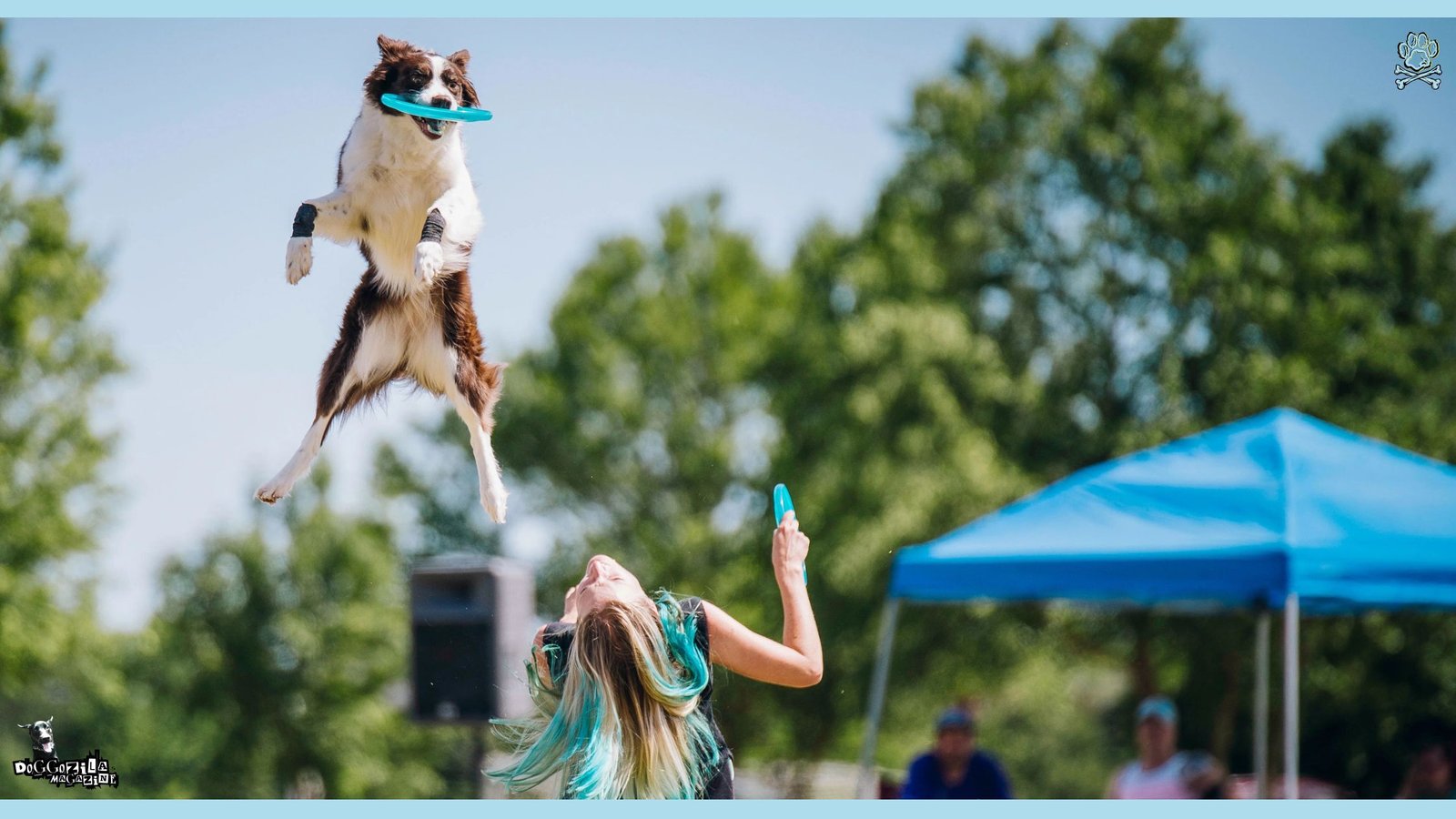
GETTING STARTED: YOUR ROADMAP TO A DISC DOG COMPETITION
The journey from curious beginner to competition-ready team is an adventure in itself. The most important step is simply to begin, focusing on fun and foundation. Start with a soft, dog-safe disc and short, playful sessions in your backyard. Let your dog discover the joy of the chase without pressure. If your dog isn’t immediately interested, try rolling the disc or pairing it with their favorite treats or toys to build value.
Your first training goal is not a catch but an obsession. You want your dog to see the disc and light up with excitement. Once that drive is established, the formal training of a retrieve, a reliable “out,” and basic catches can begin. Remember that every dog learns at their own pace, comparing your progress to others is the quickest way to frustration. Celebrate every small success along the way.
As your skills develop, set a goal to attend a local fun match or novice class. This gives you a tangible deadline to work toward and makes the training process more structured. The timeline from first throw to first competition varies widely, but many motivated teams can be ready for a novice division in a few months. The key is consistent, positive, and safe practice.
Your First 90-Day Training Plan For Disc Dog Competition in Three Steps
A structured plan helps maintain focus and ensures you build skills progressively.
- Weeks 1-4: Foundation. Focus exclusively on building drive and a reliable fetch/return. No jumping. Practice in short, 5-minute sessions, several times a day. Work on engagement, making sure your dog focuses on you and the disc despite mild distractions.
- Weeks 5-8: Introduction to Jumping. Begin with low, easy throws that your dog can catch with a small hop. Introduce the concept of a “vault” by having your dog place their paws on your thigh for a treat, gradually adding a low throw. Continue to reinforce the fetch and out command with high-value rewards. Start incorporating basic obedience cues like “stay” before a throw.
- Weeks 9-12: Sequencing and Stamina. Start linking two or three simple throws and catches together in a sequence. Begin to increase the duration of your play sessions slightly to build stamina. If possible, find a local practice group or club to train with, simulating the distractions of an event.
By the end of this period, you should have a handful of reliable skills to form a simple Toss & Fetch or micro-freestyle routine for your first disc dog competition.
Setting Realistic Goals For Your First Year In The Sport
Your goal for your first disc dog competition should not be “winning,” but rather “completing.” A successful debut is one where both you and your dog have fun, you complete your rounds without major errors, and you leave feeling excited to train more. Goals like “achieve a qualifying score in Novice Toss & Fetch” or “perform our 1-minute freestyle routine without any major mistakes” are realistic and measurable.
Within your first year, aim to compete in 3-5 events to gain experience and overcome the initial nerves. Another great goal is to “learn and cleanly execute three new freestyle tricks” or “increase our average points per minute in Toss & Fetch by 10%.” These performance-based goals keep you focused on your own team’s progress rather than your placement against others.
The most important goal for your first year is to strengthen your bond with your dog and ensure that the disc remains the most exciting game in the world for them. If you finish your first year with a dog who gets wildly excited at the sight of a disc carrier bag and a deeper, more communicative relationship, then your year has been a champion-level success, regardless of any ribbons on your wall.
The Essential Checklist For Your Debut Event
Being prepared logistically will help you stay calm and focused on your dog.
- Packing List: Multiple soft discs, high-value treats and a reward toy, water bowl and water, a familiar mat or crate for your dog to rest on, a towel, poop bags, your own lunch and water, comfortable shoes, a hat, and sunscreen. Also bring a copy of the event schedule and any pre-registration confirmations.
- Pre-Event Prep: Make sure your dog is well-exercised (but not exhausted) before you leave home. Arrive early to allow your dog time to acclimate to the new environment. Walk them around the perimeter on a leash, letting them sniff and get comfortable. Find a quiet spot to set up your “base camp” away from heavy foot traffic. Locate the check-in station and confirm your division and running order.
- Mindset for Success: Your primary job is to be your dog’s cheerleader and safety advocate. Keep your warm-up simple and positive. Breathe. Smile at your dog. Remember that everyone was a beginner once, and the community is on your side. No matter what happens in the ring, reward your dog enthusiastically afterward.
Your first disc dog competition is a celebration of all the training you’ve done together, so go celebrate!
Final Thoughts
The disc dog competition is more than a sport. It is a celebration of trust, joy, and teamwork between dogs and humans. From training and nutrition to travel and community, it offers endless opportunities for growth. Families, individuals, and dogs of all breeds can find their place in this exciting world.
The future of the sport is bright, sustainable, and inspiring.
Every leap, every throw, and every catch tells a story of connection.
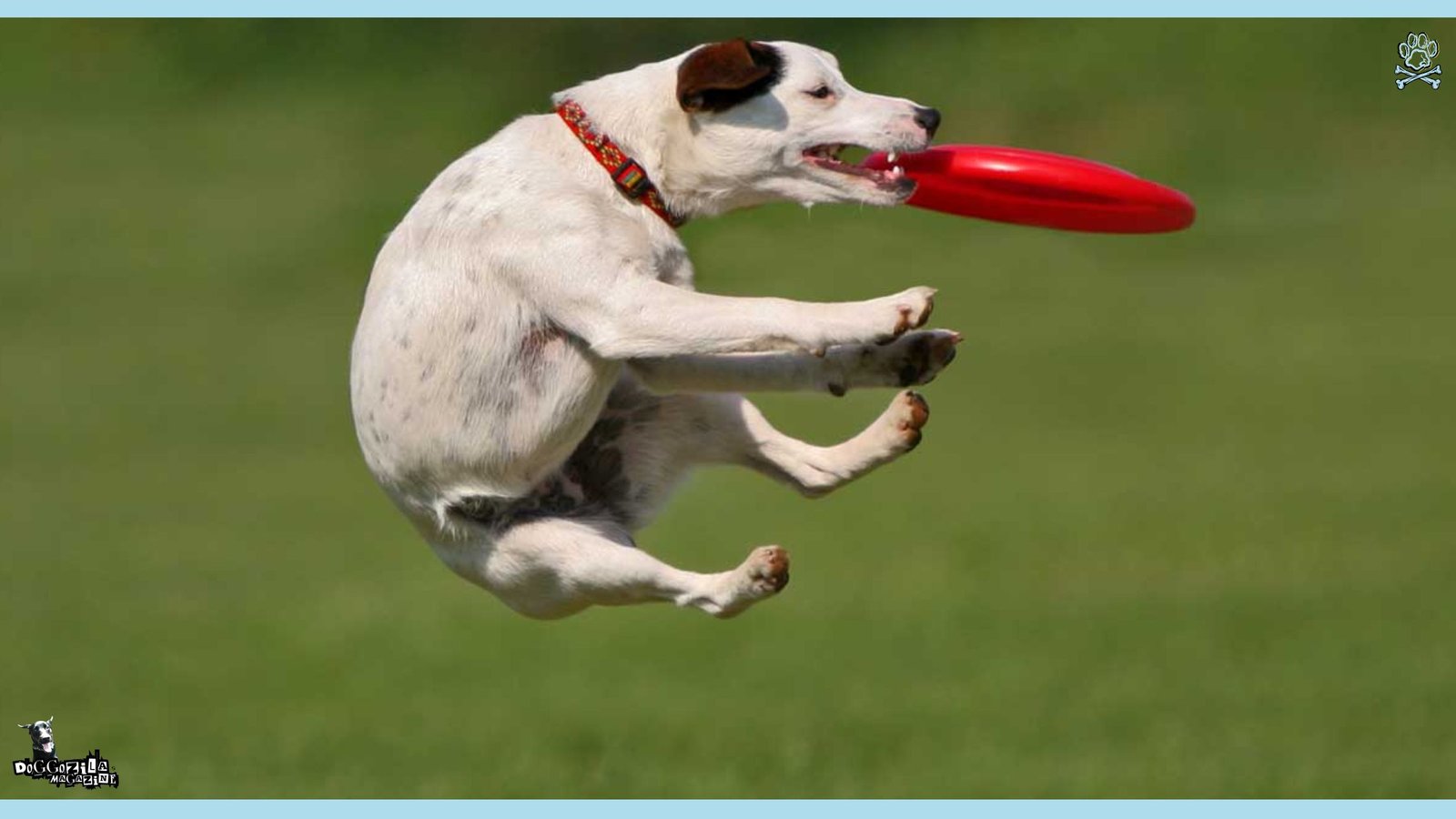
So, in the end, that story is what makes disc dog competition unforgettable.
